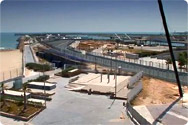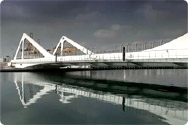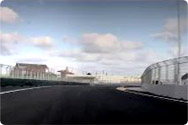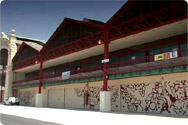|
|
City Limits: What to expect in Valencia
18.08.2008
The European Grand Prix has been a fixture on the Formula 1 calendar since 1983 but this weekend’s race has a fresh twist, with a completely new street circuit on the streets of Valencia in Spain playing host.

The vibrant city of Valencia is already well known to Panasonic Toyota Racing for its permanent circuit, which is often used for winter testing, but the European Grand Prix will be a new experience on the stunning 5.419km street circuit, which combines a glamorous location and a technical challenge.
For Panasonic Toyota Racing, adapting to the rigours of a new circuit is a familiar challenge, with four tracks joining the schedule in the last four years, not to mention the task faced by the team in starting its Formula 1 life as recently as 2002.

But the novelty of visiting a different track never loses its appeal, as Jarno Trulli says: “A new circuit means that there is a new challenge: something new to discover, new corners, new set-up, a new way of driving, because every race is a different story. Valencia is a great city with lots going on so I am looking forward to this Grand Prix.”
The Valencia track has captured the imagination for many reasons but one stands out. As a street circuit around the America’s Cup port, comparisons have naturally been made to the most famous Grand Prix of all, Monaco.
Panasonic Toyota Racing Team Manager Richard Cregan says: “Valencia is a mix because you’ve got a completely new approach. It’s a new street circuit and it’s in the middle of a city but the nice part is that it’s in the harbour. It’s great when you’ve got boats and F1 cars together like that. Monaco gives us that kind of magic feeling and now it’s good to see Valencia coming in.”

With a glorious sandy beach, the dramatic America’s Cup port and one of Europe’s liveliest cities as a backdrop, Valencia is already off to an impressive start but take a closer look and you will find a circuit which promises to be as spectacular as the surroundings.
From the start-finish straight, a fast right-hander leads into right-angle Grua Cabria which takes the cars within metres of the yachts in the harbour before the technically-challenging Malvarossa complex, which culminates in a 90km/h right hander. Next is a trip over the swing bridge across the mouth of the harbour, which - when Formula 1 is not in town - opens to allow ferries to and from the Balearic Islands to dock.
Following a tight right-hander directly after the bridge, it is full throttle all the way through a left-hander and onto the back straight, where speeds are expected to reach 320km/h before heavy braking to scrub off around 200km/h for the twisty right-left-right past the fish market.

Another long blast of the throttle rockets the cars into a tight right-hand hairpin and then the walls zip by through the exhilarating Grao section before the final turn - another hairpin. The unique pit garages, housed in former dockside warehouses, whizz by on the left as a lap is completed in an anticipated 1min 37s.
“The track looks amazing,” says Jarno. “I’ve seen the lay-out and the location but the best way to prepare for racing on a new track is to get there as soon as possible to spot the small details on the track. The best way to understand a circuit is to drive it and I can’t wait!”
Panasonic Toyota Racing has already had a sneak preview of the track in racing conditions, with several technical and logistical personnel on hand to witness the Spanish Formula 3 Championship races there on July 26-27.

Through studying events that weekend, and simulating the lay-out back at the team’s headquarters in Cologne, Germany, Panasonic Toyota Racing is well-prepared for the challenge facing it this weekend. Initial predictions suggest a medium downforce package will be required while grip at the start of the weekend will be low but is expected to increase from Friday onwards.
There are also other challenges, as Chief Engineer Race and Test Dieter Gass explains: “We can expect Valencia to be a race which is going to be very hard on the brakes, a little bit similar to Montreal. Also, we will have to see how the surface is. Usually on a street circuit you are faced with some bumpy areas which may lie in braking areas or in the corners, so that’s something we will have to deal with.”
After Timo Glock’s superb second place in Hungary tightened Panasonic Toyota Racing’s grip on fourth place in the Constructors’ Championship, the team has high expectations for the European Grand Prix on and off the track.
More than 110,000 fans will be there to see Panasonic Toyota Racing once again fighting for a result to celebrate – and to experience what promises to be an impressive addition to the Formula 1 calendar.
movies |
||||
|
